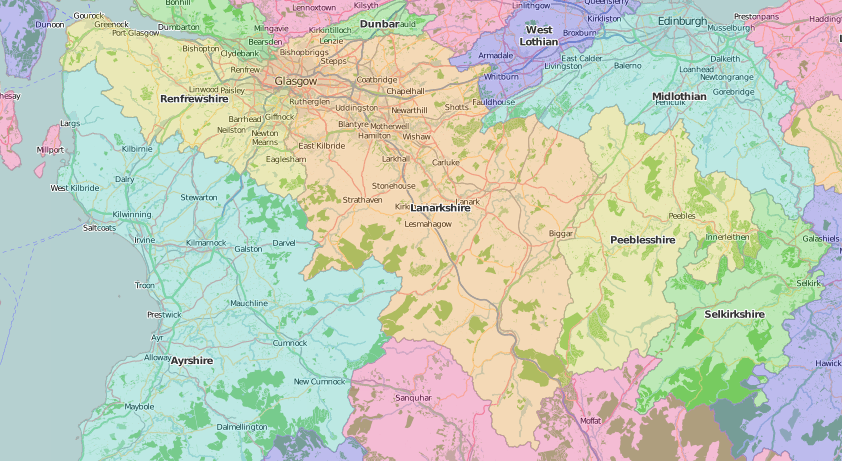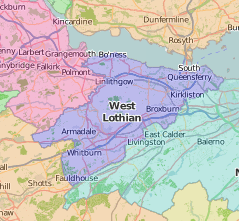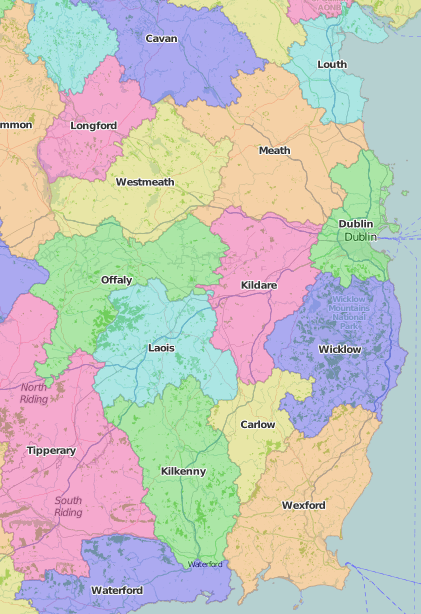
Lanarkshire (Clydesdale) and Linlithgowshire (West Lothian), and the historic Irish province of Leinster, encompassing the counties of Carlow, Dublin, Kildare, Kilkenny, Laois, Longford, Louth, Meath, Offaly, Westmeath, Wexford and Wicklow.
Lanarkshire naturally features in the publications of the Glasgow-based Maitland Club (1828-1859), which was named for the poet Sir Richard Maitland (1496-1586) and modelled on the Edinburgh-based Bannatyne Club. Volumes 12 and 14 (1831), look back to the county and its city in the 18th century: Descriptions of the sheriffdoms of Lanark and Renfrew, compiled about 1710 (v.12) and Notices and documents illustrative of the literary history of Glasgow, during the greater part of the last century. The Foulis Press is synonymous with the Enlightenment-era city and is well-represented in Special Collections, from the small format duodecimo and octavo editions of Marcus Aurelius collected by G. H. Rendall to the grand folio Virgil from Knowsley Hall.
The wider county was surveyed by the elusive John Naismith in the 1794 (quarto) and 1798 (octavo) editions of the Board of Agriculture’s General View of the county of Clydesdale; he also toured southern Scotland looking at sheep (1795), went on to consider soil (1807) and Corn laws (1814), and issued a corrected reprint of the General View in 1806 (second edition, 1813). Plenty of scope for what he called his freely expressed singular opinions on the subject.
Robert Owen (1771-1858) was busy with social, educational and industrial reform at New Lanark, as seen in our Children’s collection, and the collection of John Fraser (1836-1902), Fabian, Socialist, and zealous member of the Church of Humanity, with whom Owen might have found common ground.

Linlithgowshire
Historic Linlithgow has been supplanted more recently by the new town of Livingston, developed in a tradition recognisable from Robert Owen’s New Lanark, and now the largest town in the county.
Linlithgow Palace, birthplace of Mary Queen of Scots, was already ruinous by the time Speed’s atlas was published, largely abandoned on her son’s accession to the English throne at the Union of the Crowns in 1603. James VI and I’s repairs kept it habitable – Charles I spent a night there in 1633 – and when the Court of Sessions briefly decamped from Edinburgh to Linlithgow in 1637, it was, according to Robert Menteith, “A fine royal palace, situate upon a lake full of fish”. But it would not have offered royal accommodation by 1681, when the future James II and VII passed through during his Scottish exile at Edinburgh.

The province of Leinster was deemed the most English of the historic provinces; Speed praises its “clear and gentle” air, “mixed with a temperate disposition” and is especially keen on Dublin, “The royal seat of Ireland, strong in her munitions, beautiful in her buildings, and for the quantity matchable to many other cities frequent for traffic and intercourse of merchants”.
The map’s spacious town plan shows ships on the river Liffey plying their trade. On one of those ships in the 18th century might have been ship’s surgeon Thomas Ashbridge, or his daughter, Elizabeth Ashbridge (1713-1755). She is remembered as a Quaker autobiographer, whose final travelling ministry visit brought her to Ireland where she died in the home of the Lecky family, fellow Quakers, in County Carlow. She had been taken to America as an indentured servant and relates that she funded her freedom partly through sewing – a useful skill taught in Dublin’s Kildare Street ‘Female Model School’, one of the many schools supported by the Society for Promoting the Education of the Poor in Ireland.
Special Collections classmarks of items cited:
Lanarkshire
- Descriptions of the sheriffdoms of Lanark and Renfrew, compiled about 1710; edited by J. Dillon and J. Fullarton. Maitland Club vol.12 (1831): SPEC G12.8
- Notices and documents illustrative of the literary history of Glasgow during the greater part of the last century; edited by W.J. Duncan. Maitland Club vol.14 (1831): SPEC G12.10
- Virgil, Bucolica, Georgica, et Aeneis (Glasguae: in Aedibus Academicis, excudebat Andreas Foulis, Academiae Typographus, 1778): SPEC Knowsley 792/oversize
- John Naismith, General view of the agriculture of the County of Clydesdale (1798): SPEC Y79.3.780
- R. Owen at New Lanark, with a variety of interesting anecdotes : being a brief and authentic narrative of the character and conduct of Mr. Owen while proprietor of New Lanark : with a complete refutation of a variety of false and absurd statements that have been so industriously circulated, relative to the proceedings of that gentleman in that quarter. By one formerly a teacher at New Lanark (1839): Children D:40(4)
- George Jacob Holyoake (1817-1906), Life and last days of Robert Owen, of New Lanark (1859): SPEC Fraser 1030(16)
Linlithgowshire
- A True and exact relation of His Royal Highness, James, Duke of Albany and York, his progress from Edinburgh to Linlithgow, from thence to Strivling, and back again to Edinburgh, upon the 3d, 4th, and 5th of February instant (1681): SPEC Knowsley 268(11)
- Robert Menteith (active 1621-1660), The history of the troubles of Great Britain, containing a particular account of … Scotland from … 1633 to 1650, with an exact relation of the wars carried on … by the Marquis of Montrose …, written in French by Robert Monteth; to which is added, The true causes and favourable conjunctures which contributed to the restoration of King Charles II, written in French by D. Riordan de Muscry; translated into English by James Ogilvie (1735): SPEC Knowsley 762
Leinster
- Elizabeth Ashbridge (1713-1755), Some account of the early part of the life of Elizabeth Ashbridge, : who died, in the truth’s service, at the house of Robert Lecky, in the county of Carlow, Ireland, the 16th of 9th month, 1775 (Liverpool, 1806): SPEC 2016.P2.04
- Specimens of needle-work executed in the Female Model School, Kildare Place, Dublin (1820?): JUV.521